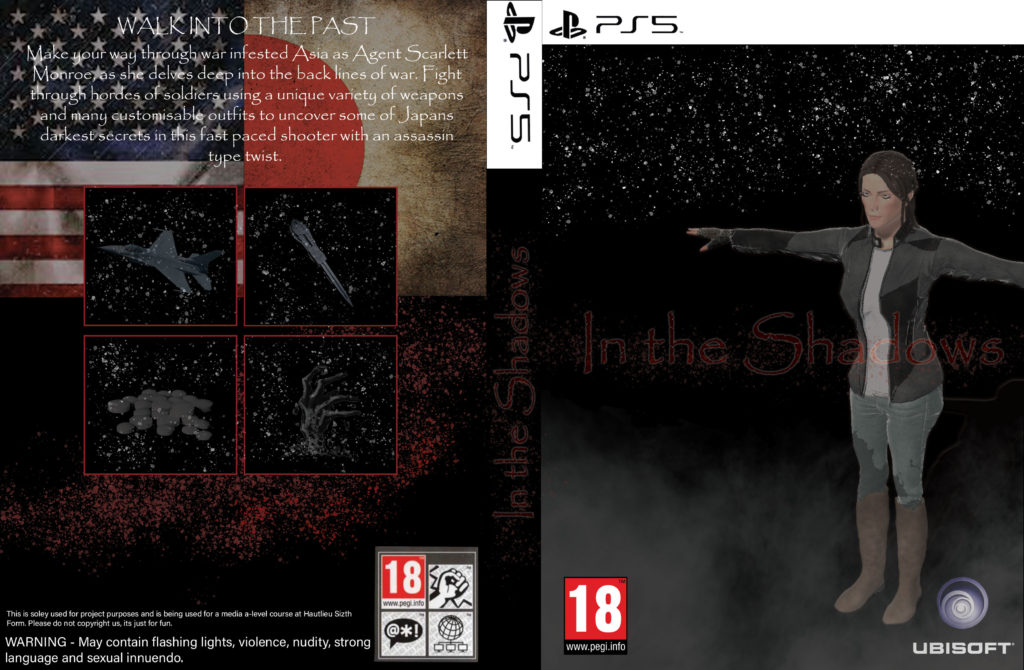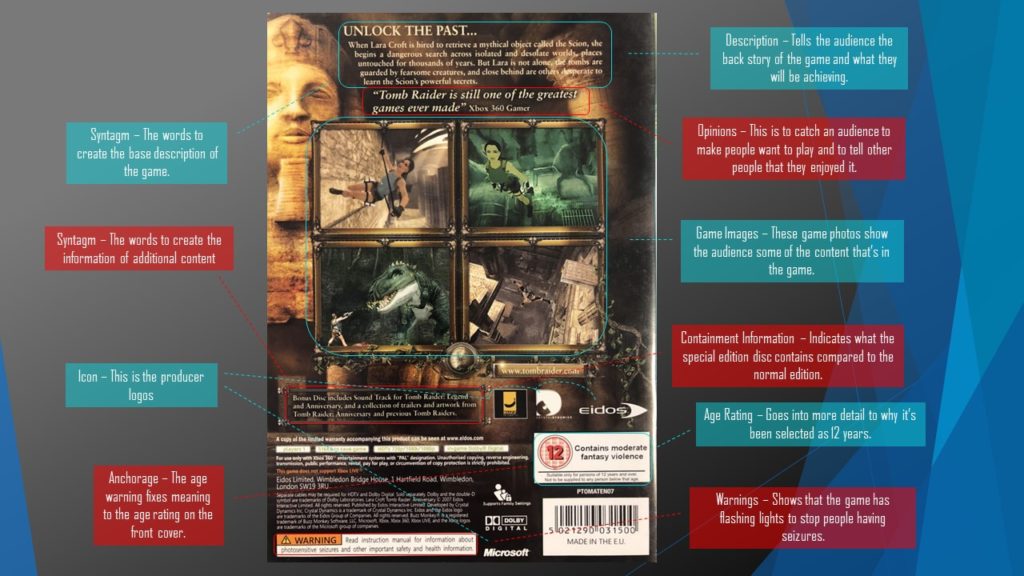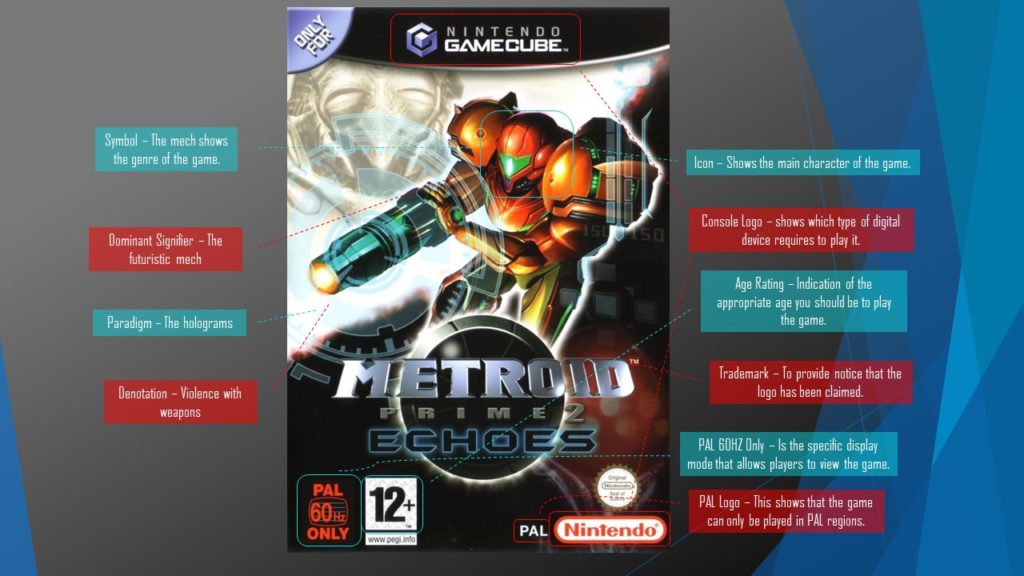I have produced an action warfare, assassin video game which represents an over sexualised, stereotypical female game character. This corresponds to Toril Moi’s analysis of the distinction between female, feminine, feminist categories of representation (1987). In my game production there is a clear signification of femininity which can be identified by the way in which she is dressed and her feminine features such as her hair and body shape/curves.
Furthermore, my characters clothing and body aspects relates to the notion of ‘Visual Pleasure and Narrative Cinema’ by Laura Mulvey, for instance her exaggerated female features such as her breasts and lower half. This creates the sense that my dominant signifier has been made to be displayed for male desire/attraction and to be gazed at. For example, this corresponds to Laura Mulvey’s words, she is a character “establishing ways of looking and spectacle” (Mulvey, p. 883, 1999).
Additionally, I feel that my product is a negative representation of femininity as women are not a satisfactory object for men to desirable look at, as well I feel that women should not be sexualised and looked at in a way that men feel the need to be dominant and manly for the way women decide to dress. However, if I was to form this product again I would inhabit a range of signifiers that would connote a sexualised plus size woman or an ethnic feature or even an LGBTQ+ appearance to my dominant signifier. I would apply these changes because I feel that a stereotypical sexy women is white, slim, with model like features. This ‘view’ should not be aimed at the ‘perfect’ woman and I feel that plus women should have the same respect and appreciation as those who are more ‘model like’. As such I would be making a positive affect on gamers and players, to realise that realistically women won’t look like over sexualised video game characters and that women should be respected more for their decisions instead of being objectified.






